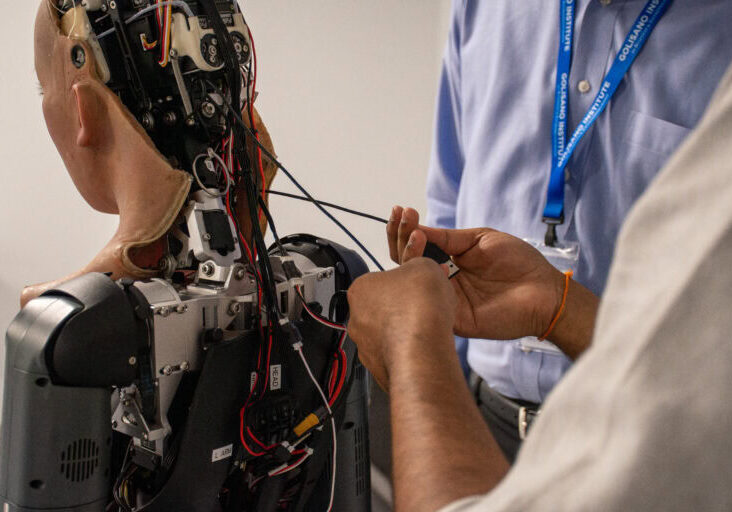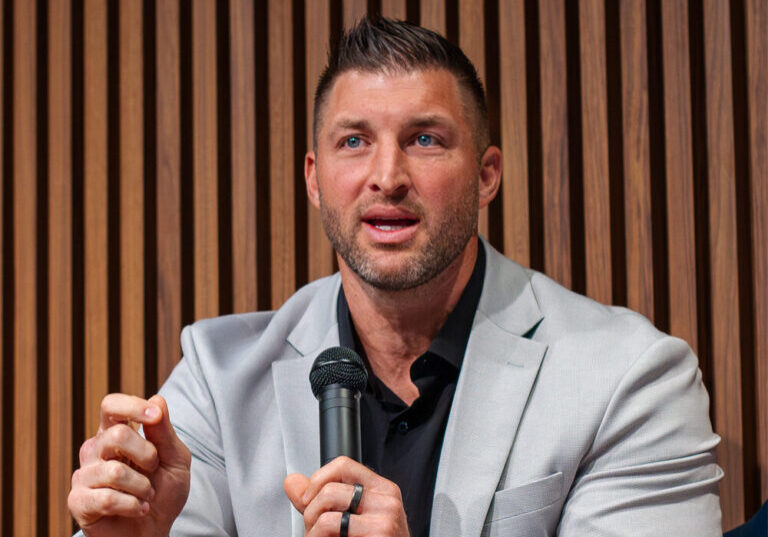1. What motivated you to transition from your previous role and join Golisano Institute as a faculty member?
My wife and I moved back to Rochester from Tennessee, where I did a combination of middle and high school math instruction and then a couple of years as an instructional coach, primarily supporting 9-12th grade STEM teachers. When we moved, I was in the process of deciding what was next for me in the world of education. During the transition, I became a remote data analyst supporting schools – part of a nonprofit organization supporting K12 schools in Rochester. Although I had a great experience, my passion was instruction, so I began exploring what that could look like here.
I considered several roles that were familiar to me, like high school math positions, but then I had the privilege of connecting with some of the folks here at Golisano Institute and, through those conversations, had an opportunity to join the math faculty. It aligned with my interest as a high school math teacher, specifically in statistics. Having experience in AP statistics with 12th graders was a great way to prepare to work with students who may have just graduated from high school or had a mix of college or career experience.
2. As a faculty member, how do you see Golisano Institute’s approach to education as being unique?
One of the things that was evident immediately is that elements of good instruction that appear in K12 and appear in other post-secondary classes or lecture halls still apply here. You know, good instruction and lesson plans are great, but I think what makes teaching so unique here is the creativity and the small business application that is exclusive to the Institute. Part of that is the class size, which is special on its own. The student-to-teacher ratio is much smaller here than that of bigger universities. The fact that a first-year math class has 20, maybe 25 people is unique. It allows for a customizable setup, especially with curricular design options. We can create business simulations grounded in math concepts that are much more accessible.
What’s more, though, is our cohort has so many classes together, which helps them get to know each other so much better. Because of that, we can do so much more in the classroom. The depth of the conversations we see in Business Math comes from the culture created here. When you’re sitting with the same classmates in Entrepreneurship, Business Technology, and Career Development, you’re getting to understand how to work well with those people. I must credit the other instructors for the work that they’re doing, too, which then leads to better outcomes and more possibilities in our class. What we can accomplish in 10 weeks is truly impressive.
3. What can students expect from taking a course with you?
I think students will immediately hear this idea of “sense-making” being emphasized. We approach it as students learning to be data storytellers, and I think that distinction is fun and helpful. I’ve found that students are so often intimidated by the concept of a computational-heavy math class. They may show up with this misconception that math class is going to be strictly lengthy problem sets and a lot of tedious solo work when a lot of the work that we do is very conversation-based. It’s trying to handle or collect data, clean data in a business context, and make sense of it.
I ask questions like, how can we collect a sample of customer data, sometimes in a fictitious scenario, but make it make sense for this fictitious business owner? How can we display it? How can we describe it? How can we calculate things with it? When it’s all purposeful, it makes it less scary. Students shouldn’t just expect these abstract computations but come ready to make sense of business data.
4. Data literacy is becoming increasingly important in business roles. How do you prepare students to be data literate?
Much of it is grounded in some of the most simple and basic elements of data analysis. In middle or high school, students are introduced to histograms, dot plots, and box plots, as well as mean, median, mode, range, and even standard deviation. Many of those concepts carry over through a lot of purposeful business data analysis. Some of the most effective data analysts or business analysts are effective storytellers. You can go a long way if you can ground yourself in the foundational concepts of data analysis or data displays, which aren’t necessarily more than high school statistics classes.
On the more technical side, we train students to use software systems. Until now, there has been a barrier for students unless they’ve taken classes on Tableau or another data software. A student hasn’t been able to utilize those tools for data analysis. Now, we see students using ChatGPT or other Large Language Models (LLMs) to get code blocks to do this work, even if they don’t necessarily know how to write the code. If they know what they want from the data display, they’re better able to accomplish that business task, which is exciting. I think that’s where it will be really interesting for our program graduates and students while they’re here to use the foundation of data analysis and then the emerging tools that are now at their disposal and really do some cool things in business application.
5. What advice would you give a student who wants to enroll at Golisano Institute?
I’ve found that students who start to get comfortable with ambiguity settle into the program faster. This relates to business and life as well. In a lot of math classes, there’s a very clear answer that we’re trying to find. In algebra class, we solve for specific variable values, which is more concrete than using data to solve a business problem, where we then make recommendations. So, there isn’t necessarily a clear answer, and the answer you come up with, or the solution you recommend is potentially different than the person sitting next to you, even if it’s the same data set and the same problem. It doesn’t necessarily mean either answer is right or wrong, better or worse. In business data analysis, sometimes the business leader says I need help making sense of this, and it’s up to the analyst to sort through the data and try to make sense of it. When students are OK with living in that uncomfortable position, they do their best.
Share this article
Related Articles
“The opportunity is out there. You just have to find it.”
Tom Golisano, Founder


